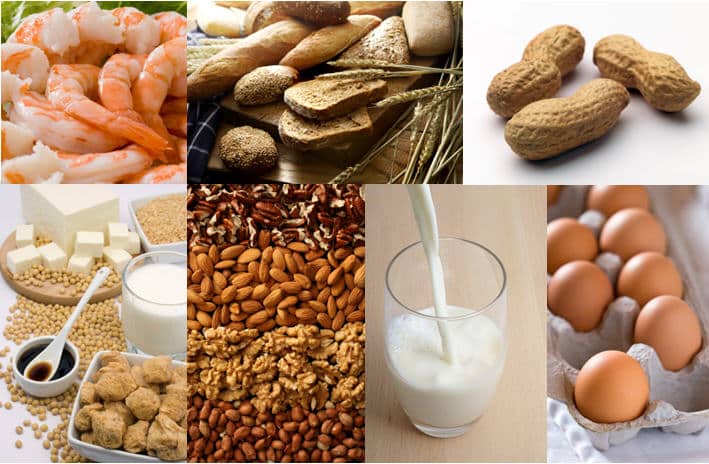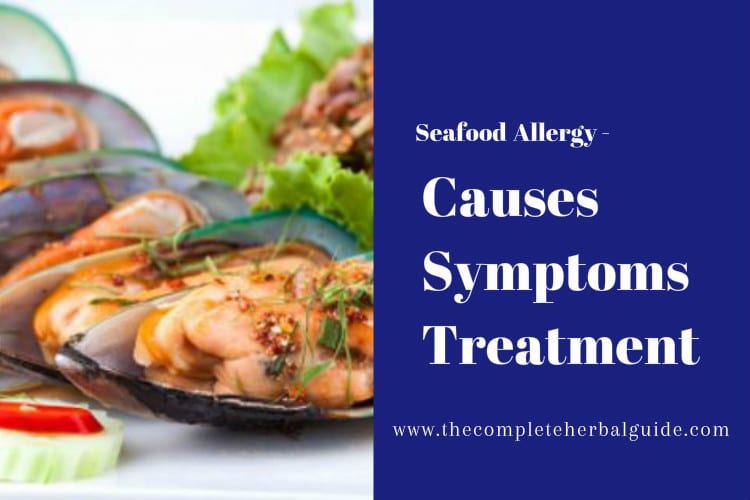
Home Remedies for Food Allergies
When a person with an allergy to foods or environmental factors encounters an offending substance, the immune system interprets it as the enemy. To help ward off the intruder, the human body activates antibodies and releases a substance called ‘histamines’. Allergies are abnormal reactions to everyday substances such as pollen, dust, dander, house dust, mold or common foods.
Allergy medications are referred to ‘anti-histamines’ because they attempt to turn off this natural, although overzealous, body reaction. The immune system readies for battle with a vengeance, and attacks the offending substance, along with other body tissues, imposing an uncomfortable variety of symptoms on the allergy sufferer. These can range from annoying but bearable conditions–such as:
- Rashes
- Scratchy Throats
- Toothaches
— to more frightening reactions like a closed throat and difficulty breathing. Frequent bouts of bronchitis, asthma, and severe eczema, conditions that can be physically and emotionally painful—are all the more common in allergic individuals.
Frequent bouts of bronchitis, asthma, and severe eczema, conditions that can be physically and emotionally painful—are all the more common in allergic individuals.
In rare cases, food allergies can even be deadly. For example, some people are so severely allergic to peanuts that even a teaspoon of peanut butter can cause them to go into anaphylactic shock, a severe allergic reaction that can be life-threatening. They must constantly carry epinephrine to counter these ever-present dangerous effects- in this case, herbs and natural remedies are not enough!
Table of Contents
The most common food allergies include:
- Dairy products
- Nuts
- Wheat
- Yeast
- Eggs
- Soybeans
- Shellfish
- Tomatoes
Some foods can cause an allergic reaction as soon as you take a bite, while others can take hours or even days to elicit an allergic response. Immediate food allergies are moderated by a group of immunoglobulins in the body, referred to as IGE, while the delayed allergies are related to a different immunoglobulin called IGG. Conventional allergy screening often looks for IGE mediated allergies, while ignoring IGG based allergies.
No one understands exactly why certain people are allergic. The propensity to develop allergies can run in families and may be inherited to some extent. Many people who suffer from food allergies are also more prone to other types of allergies such as sensitivities to pollen and chemicals. Especially during spring and fall pollen seasons, allergens can be blown onto melons and other food crops. “Cross-reactivity” for pollen sensitive individuals is also common with avocados, bananas, kiwi, papaya, and chestnuts. Interestingly, babies who are breastfed are less likely to develop allergies than their formula-fed peers.
If you have any type of allergy carefully scrutinize the labels of any substance you ingest. Even supplements may contain allergens that you are unaware of. For example, if you are allergic to shellfish, then you should probably think twice before taking an oyster shell calcium supplement, or Glucosamine/Chondroitin, usually made from the exoskeletons of shellfish. If you are allergic to pollen avoid bee pollen supplements such as royal jelly and honey. On the other hand, honey made from the exact flower pollen that a person has a sensitivity to can sometimes help the allergy by desensitizing the immune system.
Dyes, preservatives and other chemicals found in abundance in both the Standard American Diet, as well as the environment can increase allergy symptoms. If you eat preserved or non-organic items and are experiencing an allergic reaction, consider switching to all natural, organic, preservative-free foods. People with environmental allergies may also have to remove sources of toxic chemicals and fumes from the home, including cleaners, carpeting and other sources of ‘out-gasing’.
In the 30+ years that I have been working with allergic patients, I have seen them make remarkable progress once they commit to tracking down the ‘triggering’ substances (including stress-inducing thought patterns) that set off their symptoms. The use of nutritional supplements and herbs can be extremely helpful, non-toxic adjunctive therapy to dietary and lifestyle changes.
Here are some home remedies for food allergies.
Anti-Allergy Cocktail:
Ingredients
- Bromelain 2000 mg powdered, buffered Vit C 100 mg
- Vitamin B-6 1000 mg
- Magnesium 1000 mg
- Calcium 250 mg
- Bioflavonoids
Directions:
mix all into 1/2 glass water up to 2 times/day during an allergy attack
Bromelain(a digestive enzyme from Pineapple) and Quercitin(one of the bioflavonoids) work well together to offset an allergic reaction
Allergic reactions involve many different organ systems of the body, besides the area that manifests symptoms. These include the respiratory system, the liver, and the adrenal glands. Using herbs to strengthen these systems will give your body a preventative edge over allergic reactions, and will further help decrease the severity of uncomfortable symptoms.
Home Remedies for Allergies:
Licorice
The most widely studied adrenal herb. Licorice has anti-inflammatory actions similar to the glucocorticoids (which are produced by healthy adrenals) and is involved with resolving allergic reactions. It also preserves the effects of cortisol, the adrenal hormone involved in clearing allergies.(avoid with high blood pressure)
Ginseng
The onset of allergies can be attributed to stress. The adaptogenic properties of Ginseng allow the adrenal glands to balance stress while creating an overall resistance to allergic reactions, colds, flu, and infections.
Dandelion
Nutritive and strengthening herb for the liver. It helps clear toxins and stimulates the liver to work towards the resolution of the allergic reaction.
Milk Thistle
Acts as both a protector and regenerator of the liver. This herb helps repair damaged tissue and support the actions necessary for dealing with allergens and their accompanying symptoms.
Nettles and Eyebright
Work well together to calm nasal congestion, watery eyes and stuffiness often experienced by allergy sufferers. They are appropriate remedies for short-term relief, and may also be taken before the season begins as a means of prevention for pollen allergies.
Ma Huang
Contains natural ephedrine. Psuedo-ephedrine is the active ingredient in prescription and over-the-counter allergy medications. Ma Huang acts to open the bronchial passageways. Due to its stimulating nature, use Ma Huang with caution if you have high blood pressure, heart disease, etc.
Elder Flower
Acts to increase bronchial secretions and is a natural decongestant. Helps to soothe mucous membranes.
Mullein and Fenugreek
Traditionally used for upper respiratory problems. Helps to clear mucously and support the lungs.
Echinacea and Goldenseal
Combat both the discomfort of allergies as well as reduce excess mucous from the nasal and respiratory tract.
Ellen Kamhi Ph.D. RN, The Natural Nurse® is the author of The Natural Medicine Chest, Arthritis, The Alternative Medicine Definitive Guide, Cycles of Life, Herbs and Energetics for Women, Weight Loss: The Alternative Medicine Guide, and other books. She is on radio/TV daily and consults with individuals and the Nutraceutical Industry. http://www.naturalnurse.com






